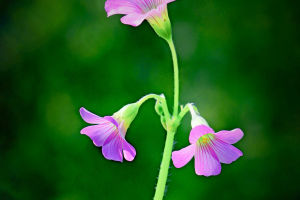The Ginkgo tree is one of the oldest existing tree species on the earth, with a history of more than 200 million years. The tree is often called a living fossil because it has remained unchanged for millions of years and is the only surviving member of the ginkgo family.
Ginkgo biloba is distributed in various regions of the world, including Japan, Korea, and Europe. The tree was brought to Europe in the 18th century and to North America in the late 1700s. Today, ginkgo trees are found in many parts of the world and are often grown as ornamental trees because of their distinctive fan-shaped leaves and ability to tolerate pollution and other environmental stressors.
Ginkgo biloba, or the ginkgo tree, has been valued for its medicinal properties for centuries. The leaves, seeds, and even the bark of the tree are used in traditional medicine for a variety of purposes. Here are some potential benefits of ginkgo:
1. Cognitive function: Ginkgo is thought to improve cognitive function, especially in the elderly. Some studies have found that ginkgo may improve memory, attention, and executive function in people with age-related cognitive decline.
2. Mood and anxiety: Ginkgo may have mood-regulating properties that may help reduce symptoms of anxiety and depression. Some studies have found that ginkgo can improve symptoms of anxiety and depression in people with mild to moderate symptoms.
3. Cardiovascular health: Ginkgo has been shown to improve blood flow and reduce inflammation in the body, which may help reduce the risk of cardiovascular disease. Some studies have also found that ginkgo can help lower blood pressure and lower cholesterol levels.
4. Eye health: Ginkgo may have protective effects on the eyes and may help prevent or slow the progression of age-related macular degeneration.
5. Anti-inflammatory and antioxidant properties: Ginkgo contains compounds with anti-inflammatory and antioxidant properties that may help prevent cell damage and reduce the risk of chronic diseases like cancer.
While ginkgo has been used in traditional medicine for centuries, scientific evidence supporting its efficacy for many uses is limited. If you're considering using ginkgo for a specific health problem, be sure to consult with your healthcare provider to determine if it's safe and right for you.
In addition to medicinal value, ginkgo trees also have high ornamental value. Ginkgo trees are often grown as ornamental trees due to their unique appearance, hardiness, and adaptability to a wide range of growing conditions. Here are some ornamental features of ginkgo trees:
Foliage: Ginkgo trees have distinctive fan-shaped leaves that turn bright yellow in the fall before falling. The leaves are arranged in a symmetrical pattern along the branches and are very striking when viewed up close.
Bark: The bark of mature ginkgo trees is deeply wrinkled and very attractive, especially in winter when the leaves fall off.
Growth Habit: Ginkgo trees have a unique upright growth habit with a broad canopy that provides shade and visual interest to the landscape.
Tolerance to Pollution: Ginkgo trees are tolerant of pollution and other environmental stressors, making them ideal for urban areas where air quality may be a concern.
Longevity: Ginkgo trees are known for their longevity and can live for hundreds of years, making them a good investment for homeowners and gardeners looking for a long-term solution.
Overall, ginkgo trees are a popular choice for landscaping and can add a unique and attractive element to any outdoor space.


